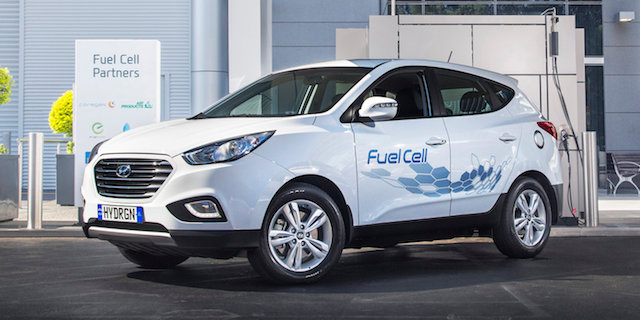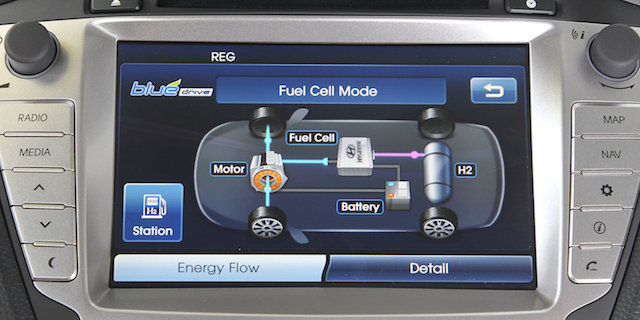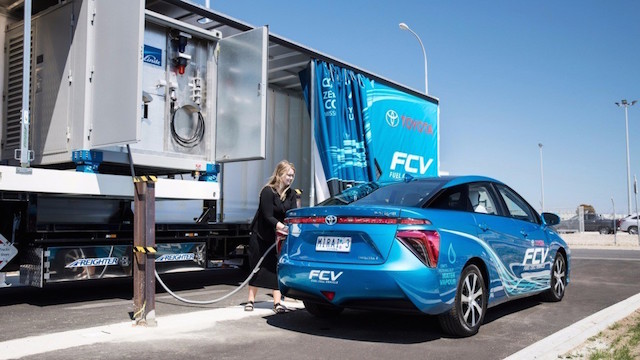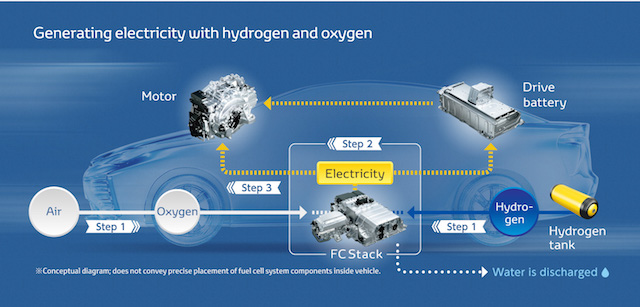
Refuelling hydrogen-powered and conventional combustion-engined cars is a similar process – that’s why companies like Toyota and Hyundai believe fuel-cell technology is a natural stepping-stone from hybrids.
South Korea’s Hyundai has already leap-frogged petrol-electric hybrid power in this part of the world with an agreement to supply the Australian Capital Territory government with the country’s first order of hydrogen-powered cars.
The ACT will buy 20 fuel-cell versions of Hyundai’s next-generation ix35 SUV as part of its Renewable Transport Fuels Test Berth in Canberra.

The $23 million renewable fuels test not only includes the 20 hydrogen-powered vehicles but also the Hornsdale Wind Farm Stage 3 project, which will provide renewable energy for a hydrogen refueller capable of powering 1000 fuel-cell electric vehicles (EVs).
Hornsdale Wind Farm has 100 turbines stretching 20km along a range of hills about 220km north of Adelaide. It’s currently generating 100 megawatts and further development under Stage 3 will increase that to 270 megawatts.
Hornsdale’s developers – French renewable energy company Neoen and its Australian investment partner Megawatt Capital – last year signed a 20-year deal to supply the ACT with electricity.

Neoen, Megawatt Capital, Hyundai and German company Siemens will establish in Canberra a 1.25 megawatt hydrogen electrolyser, which converts electricity to hydrogen. The plant will provide fuel-grade hydrogen gas for over 1000 fuel-cell EVs travelling an average of 14,000km a year, without the use of any fossil fuels.
Hyundai Australia CEO Charlie Kim told media across the Tasman that he hopes the Canberra project will kick-start the adoption of fuel-cell vehicles Down Under. Hyundai has the only hydrogen refueling station in Australia, used to power its demonstration ix35.
“We hope this brilliant project inspires others to see the potential of hydrogen as a future fuel for our cars,” he said. “This first small step toward a zero-emissions transport solution for Australia is very significant and we are proud to be involved.”

The current Hyundai ix35 Fuel Cell is driven by an electric motor that produces 100kW and 300Nm. To power the motor, the fuel cell generates electricity from the reaction of hydrogen and air with electrodes from its fuel cell stack. Only water vapour comes out of the vehicle’s tailpipe.
The 0-100km/h run takes around 12.5 seconds, says Hyundai, on its way to a top speed of 160km/h. The next-generation Hyundai hydrogen fuel-cell ix35 is due in 2018.
Meantime, Toyota Australia has thrown its weight behind the adoption of hydrogen fuel-cell technology. It has been taking its Mirai fuel-cell sedan and mobile hydrogen refueller station around the country, part of a three-year trial.

Its manager for product planning, Michael Elias, told reporters that the giant Japanese company views hydrogen power as a natural progression from hybrids. “It’s a stepping-stone from hybrid to fuel-cell technology,” he said. “In Australia, we drive long distances. That creates a great opportunity for fuel-cell.”
Elias said there were several organisations – including other carmakers – working on implementing hydrogen Down Under.“There’s a working group with many stakeholders. A lot of players,” he said.
“While we say this technology requires infrastructure, other technologies also require infrastructure,” he added, in reference to the charging network and home charging systems required for electric and plug-in hybrid (PHEV) vehicles. The question remains: Will hydrogen power leap-frog plug-ins?
